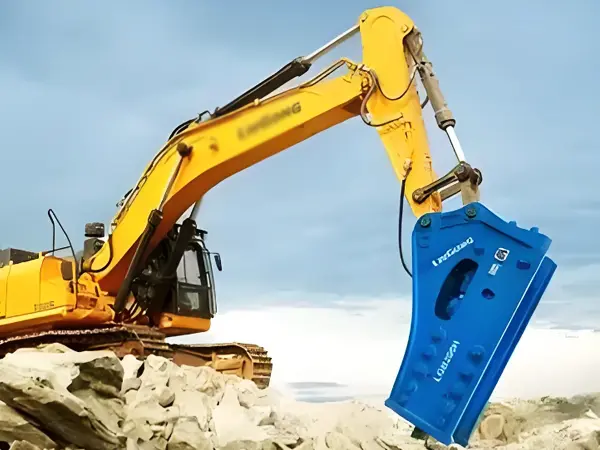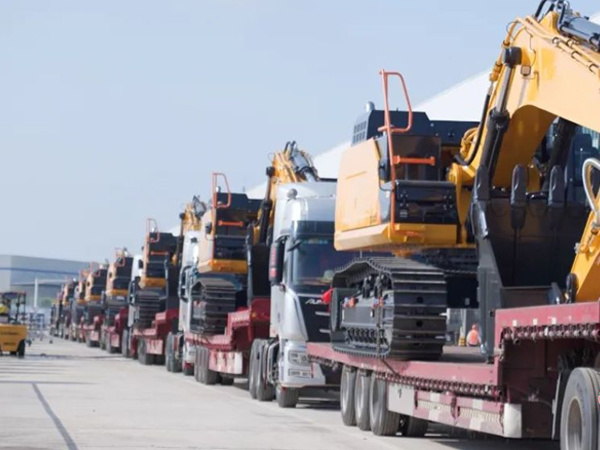The Essential Role of Bucket Cylinder in Excavators: Maximizing Efficiency in Construction Projects
Release time:
2025-05-01
--- The bucket cylinder is a crucial component of excavators, serving as the driving force behind the machine's ability to perform various digging, lifting, and loading tasks. This hydraulic cylinder forms part of the arm that connects the bucket to the excavator's structure, enabling the smooth and controlled movement necessary for effective excavation work. One of the primary functions of the bu
---
The bucket cylinder is a crucial component of excavators, serving as the driving force behind the machine's ability to perform various digging, lifting, and loading tasks. This hydraulic cylinder forms part of the arm that connects the bucket to the excavator's structure, enabling the smooth and controlled movement necessary for effective excavation work.
One of the primary functions of the bucket cylinder is to facilitate the extension and retraction of the bucket. When the operator engages the hydraulic system, the bucket cylinder extends, allowing the bucket to dig into the ground. Once the desired amount of material is collected, the cylinder retracts, lifting the bucket and allowing it to be transported to a designated location for dumping. This efficient back-and-forth action is essential for completing excavation tasks quickly and effectively.
The design and construction of the bucket cylinder are equally important. It must withstand significant hydraulic pressure while being exposed to harsh environmental conditions, such as dirt, debris, and moisture. Therefore, manufacturers often use high-strength materials and advanced engineering techniques to ensure durability and reliability. Regular maintenance of the bucket cylinder is also vital; operators should routinely check for leaks, wear, and other potential issues to keep the machinery functioning optimally.
In addition to its mechanical functions, the bucket cylinder also contributes to the overall safety of excavation operations. A well-maintained cylinder ensures that the bucket operates smoothly, minimizing the risk of sudden movements that could lead to accidents. Furthermore, understanding the limits of the bucket cylinder's capacity can prevent overloading and potential failures, enhancing safety for both operators and site personnel.
In terms of versatility, the bucket cylinder allows excavators to perform a wide range of tasks beyond simple digging. Operators can adjust the angle and depth of the bucket, making it easier to achieve precise results for grading, trenching, and material handling. The adaptability of the bucket cylinder is one reason why excavators are an invaluable asset in construction and engineering projects.
In conclusion, the bucket cylinder is a fundamental element of excavators that significantly impacts their efficiency and effectiveness in various applications. By understanding its function, maintenance needs, and operational capabilities, professionals in the construction and engineering sectors can maximize the performance of their excavators, ensuring successful project completion while maintaining safety and productivity on site.
The bucket cylinder is a crucial component of excavators, serving as the driving force behind the machine's ability to perform various digging, lifting, and loading tasks. This hydraulic cylinder forms part of the arm that connects the bucket to the excavator's structure, enabling the smooth and controlled movement necessary for effective excavation work.
One of the primary functions of the bucket cylinder is to facilitate the extension and retraction of the bucket. When the operator engages the hydraulic system, the bucket cylinder extends, allowing the bucket to dig into the ground. Once the desired amount of material is collected, the cylinder retracts, lifting the bucket and allowing it to be transported to a designated location for dumping. This efficient back-and-forth action is essential for completing excavation tasks quickly and effectively.
The design and construction of the bucket cylinder are equally important. It must withstand significant hydraulic pressure while being exposed to harsh environmental conditions, such as dirt, debris, and moisture. Therefore, manufacturers often use high-strength materials and advanced engineering techniques to ensure durability and reliability. Regular maintenance of the bucket cylinder is also vital; operators should routinely check for leaks, wear, and other potential issues to keep the machinery functioning optimally.
In addition to its mechanical functions, the bucket cylinder also contributes to the overall safety of excavation operations. A well-maintained cylinder ensures that the bucket operates smoothly, minimizing the risk of sudden movements that could lead to accidents. Furthermore, understanding the limits of the bucket cylinder's capacity can prevent overloading and potential failures, enhancing safety for both operators and site personnel.
In terms of versatility, the bucket cylinder allows excavators to perform a wide range of tasks beyond simple digging. Operators can adjust the angle and depth of the bucket, making it easier to achieve precise results for grading, trenching, and material handling. The adaptability of the bucket cylinder is one reason why excavators are an invaluable asset in construction and engineering projects.
In conclusion, the bucket cylinder is a fundamental element of excavators that significantly impacts their efficiency and effectiveness in various applications. By understanding its function, maintenance needs, and operational capabilities, professionals in the construction and engineering sectors can maximize the performance of their excavators, ensuring successful project completion while maintaining safety and productivity on site.





